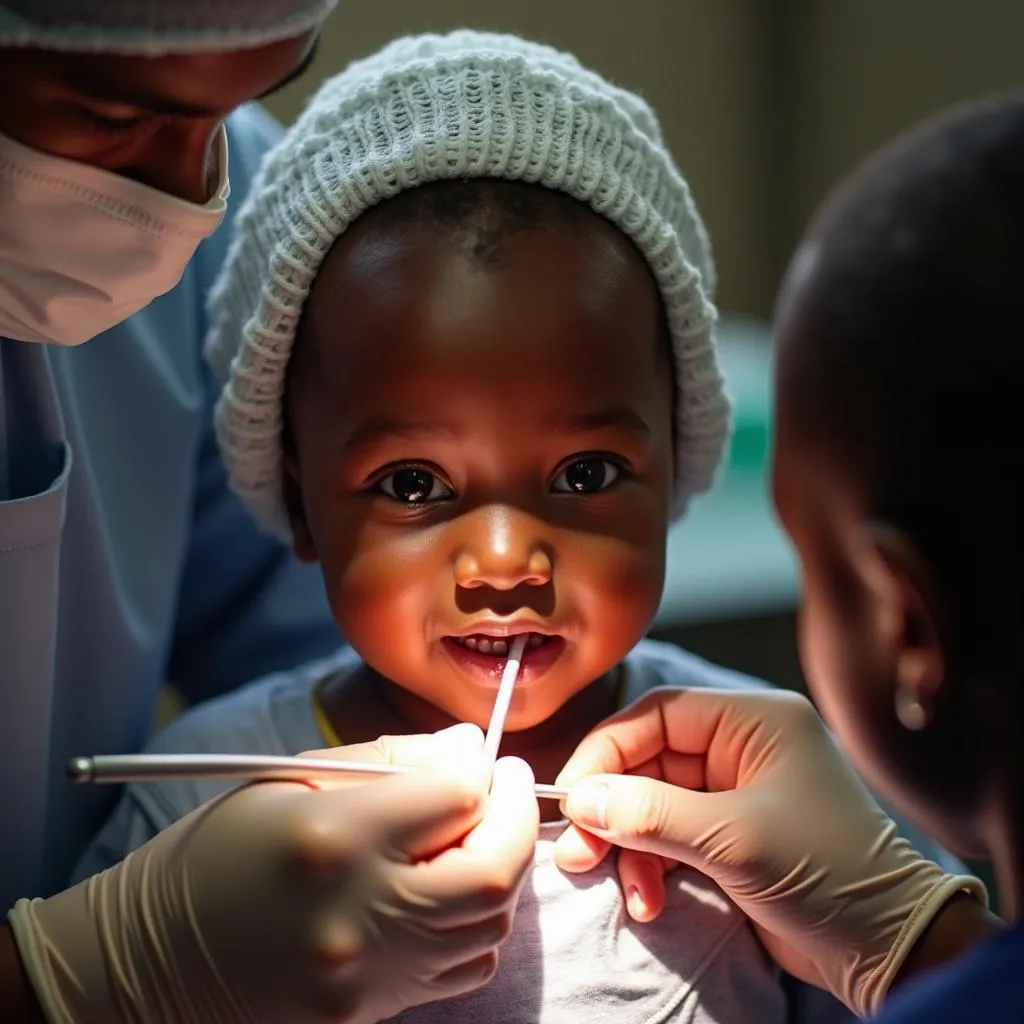Understanding the Prevalence of Cleft Lip and Palate in Africa
Cleft lip and palate are common birth defects that occur when the lip and/or palate do not close completely during pregnancy. While the exact cause is unknown, research suggests a combination of genetic and environmental factors play a role. In Africa, the prevalence of cleft lip and palate varies significantly across different regions, with certain areas experiencing higher rates than others.
Why is Cleft Lip and Palate Prevalence Higher in Africa?
The prevalence of cleft lip and palate in Africa is influenced by various factors, including:
- Genetic predisposition: Some ethnic groups in Africa have a higher genetic predisposition to cleft lip and palate, making them more susceptible to developing this condition.
- Environmental factors: Environmental factors such as malnutrition, exposure to certain toxins, and maternal smoking during pregnancy can also contribute to an increased risk.
- Access to healthcare: Limited access to quality healthcare, especially in rural areas, can delay diagnosis and treatment, leading to a higher prevalence of untreated cleft lip and palate cases.
- Cultural beliefs and practices: Certain cultural beliefs and practices, such as the use of traditional medicines, may contribute to the prevalence of these birth defects.
Cleft Lip and Palate Prevalence Statistics in Africa
While accurate data collection is challenging, studies have provided some insights into the prevalence of cleft lip and palate in various African countries:
- Nigeria: Studies indicate that the prevalence of cleft lip and palate in Nigeria is approximately 1 in 700 births.
- South Africa: The prevalence in South Africa is estimated to be around 1 in 1,000 births.
- Tanzania: Research in Tanzania has shown a prevalence rate of approximately 1 in 1,200 births.
It’s important to note that these are just a few examples, and the actual prevalence of cleft lip and palate may vary significantly depending on the specific region within each country.
Impact of Cleft Lip and Palate on Individuals and Communities
Cleft lip and palate can have significant social, psychological, and functional impacts on individuals and their families. Individuals with cleft lip and palate may face challenges with feeding, speech, hearing, and social integration. The condition can also be stigmatized, leading to social isolation and discrimination.
“Cleft lip and palate can be a very challenging condition to live with, especially in communities where healthcare access is limited. It’s important to remember that these individuals deserve compassion, support, and access to appropriate treatment.” – Dr. Amani Salim, Pediatrician, Dar es Salaam, Tanzania
Treatment Options for Cleft Lip and Palate in Africa
Treatment for cleft lip and palate typically involves surgery, speech therapy, and dental care. However, access to these services can be limited in many African countries, particularly in rural areas.
Here are some of the challenges:
- Financial constraints: Many families struggle to afford the cost of treatment, especially for multiple surgeries and ongoing care.
- Limited surgical facilities: Not all hospitals and clinics have the necessary facilities or expertise to perform cleft lip and palate surgery.
- Lack of trained healthcare professionals: There is a shortage of trained surgeons, speech therapists, and other specialists who can provide specialized care.
“Addressing the lack of trained healthcare professionals and improving access to specialized care are crucial steps in reducing the impact of cleft lip and palate in Africa.” – Professor Charles Osei, Plastic Surgeon, Accra, Ghana
Organizations Working to Improve Cleft Lip and Palate Care in Africa
Several organizations are working to improve cleft lip and palate care in Africa by:
- Providing surgical and other medical services: These organizations conduct medical missions, train local healthcare professionals, and provide financial assistance for treatment.
- Raising awareness and promoting early intervention: They educate communities about cleft lip and palate, dispel myths and stigma, and encourage early diagnosis and treatment.
- Advocating for government support and policy changes: They work with governments to develop policies that improve access to healthcare, including cleft lip and palate treatment.
What Can You Do?
- Donate to organizations working to improve cleft lip and palate care in Africa.
- Spread awareness about the condition and its impact on individuals and communities.
- Support local initiatives and volunteer your time to help those affected by cleft lip and palate.
FAQ
Q: What causes cleft lip and palate?
A: While the exact cause is unknown, a combination of genetic and environmental factors is thought to play a role.
Q: How common is cleft lip and palate in Africa?
A: The prevalence varies depending on the region, but it’s generally higher than in other parts of the world.
Q: What is the treatment for cleft lip and palate?
A: Treatment typically involves surgery, speech therapy, and dental care.
Q: What can I do to help?
A: You can donate to organizations working to improve cleft lip and palate care, spread awareness about the condition, and support local initiatives.
 Child undergoing cleft lip and palate surgery in a hospital in Africa
Child undergoing cleft lip and palate surgery in a hospital in Africa
Remember, every individual deserves access to quality healthcare and the opportunity to live a full and fulfilling life. Let’s work together to improve cleft lip and palate care and support communities in Africa.